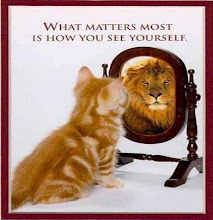 Bottom-Line
Bottom-Line
- What is the Essay Topic
- What is your position (agree, disagree, neutral)
- Why are you taking this position (give 3+ main arguments to prove your case)
- Use the 3+ arguments to summarize your Thesis
- Introductory Paragraph: recap the essay topic, state your position, and summarize your +3 arguments into a thesis sentence
- Body Paragraph: Provide examples and evidences supporting each arguments (quote academic info and cite sources)
- Conclusion Paragraph: restate your thesis and expand your arguments. Elaborate on Thesis - leave your reader with solutions, answers, ideas, alternatives
- Review essay for the following:
How an Essay is Graded- Intelligent / Convincing Argument
- Relevant examples/evidences to support Argument
- Clear Organization (smooth progression from idea to idea)
- Use of imaginative sentences and complex vocabulary
- Freedom from grammatical errors and mistakes
Developing Thesis- Rewrite the essay requirement and objectives
- Take a Point of View on the Topic – do you agree, disagree, or neutral? (one Argument only)
- Brainstorm:
- Ask several questions as to why you are taking a specific position on the Topic
- List examples/evidences that support each questions
- Map/Outline your Essay to clearly organize each evidence with supporting details
- Write a Thesis that summarizes all the Main Evidences that support your central Argument
- Supporting Details does not have to be included. Why? You are convincing reader of your Point of View, not explaining!
Follow a standard Essay format: - Introductory Paragraph (tells the reader what your essay is about and the position you’re taking)
- Rewrite the essay requirements and objective (Topic)
- Rewrite Thesis that summarizes all the evidences that support your main Argument
- Body (reason(s) why reader should agree with your position)
- Evidence #1: Topic Sentence + Supporting Details + Summary/Transition Sentence (to lead into next paragraph)
- Evidence #2
- Evidence #3
- Evidence #4
- Conclusion (summarizes your arguments supporting your Point of View)
- Restate Thesis that summarizes all the evidences that support your main Argument
- Move beyond the Thesis and restate some supporting details to finally conclude your original Argument
Other Ideas- Restate simple sentences with more complex and colorful sentences
- Does your final Essay follow your original Map/Outline? Is it a smooth progression from idea to idea?
- Use/replace simple vocabulary with 25 complex words list
- Do not use same/similar vocabulary words twice
- Use computer thesaurus to find colorful words
- Use descriptive/action words before Nouns/Verbs
- Recheck essay for grammatically mistakes
- Map/Outline Articles – will keep you focused, and provide additional ideas to explore.
- Always use your personal experiences, books/magazine read, past college subjects ideas, and personal life examples to support your Point of View on an Essay topic.
- Fill-up your Essay by citing research materials that support your main argument
GradingScore Point 5—Superior
The writer is in command of the conventions of language. The writer makes very few, if any, mistakes in sentence formation, usage, and mechanics. Some evidence is shown of advanced or innovative techniques.
Score Point 4—Effective
On the whole, the writer correctly applies the conventions of language, though there are some mistakes in sentence formation, usage, or mechanics. However, none of these errors are serious enough to interfere with the overall flow of the response or with its meaning.
Score Point 3—Adequate
The writer is fairly successful in applying the conventions of language. Several mistakes in sentence formation, usage, or mechanics are present. While the density of these errors may interfere with the overall flow of the response, they do not interfere with its meaning.
Score Point 2—Marginal
The writer is marginally successful in applying the conventions of language. Patterns of mistakes in sentence formation, usage, and mechanics significantly detract from the presentation. At times the meaning of the response may be weakened.
Score Point 1—Weak
The writer’s achievement in applying the conventions of language is limited. Frequent and serious mistakes in sentence formation, usage, and mechanics make the response difficult to understand.

 Mac & Win Driver: http://www.iogear.com/support/dm/driver/GUB211#display
Mac & Win Driver: http://www.iogear.com/support/dm/driver/GUB211#display
 Mac & Win Driver: http://www.iogear.com/support/dm/driver/GUB211#display
Mac & Win Driver: http://www.iogear.com/support/dm/driver/GUB211#display http://www.broward.edu/outlines/CGS1060C.pdf
http://www.broward.edu/outlines/CGS1060C.pdf Bottom-Line
Bottom-Line XP
XP ) icon, click All Programs , and then click Windows Photo Gallery .
) icon, click All Programs , and then click Windows Photo Gallery .
 Map the Main Argument for each Passage
Map the Main Argument for each Passage Elementary algebra is the most basic form of algebra. It is taught to students who are presumed to have no knowledge of mathematics beyond the basic principles of arithmetic. In arithmetic, only numbers and their arithmetical operations (such as +, −, ×, ÷) occur. In algebra, numbers are often denoted by symbols (such as a, x, or y). This is useful because:
Elementary algebra is the most basic form of algebra. It is taught to students who are presumed to have no knowledge of mathematics beyond the basic principles of arithmetic. In arithmetic, only numbers and their arithmetical operations (such as +, −, ×, ÷) occur. In algebra, numbers are often denoted by symbols (such as a, x, or y). This is useful because: 




